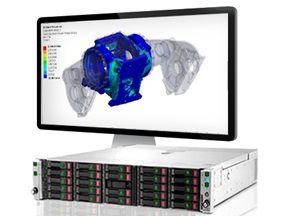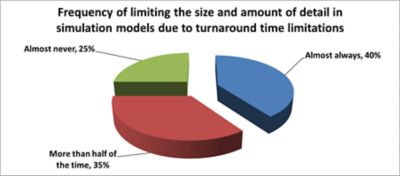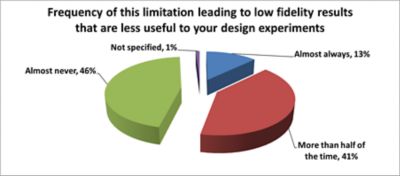-
United States -
United Kingdom -
India -
France -
Deutschland -
Italia -
日本 -
대한민국 -
中国 -
台灣
-
Ansys는 학생들에게 시뮬레이션 엔지니어링 소프트웨어를 무료로 제공함으로써 오늘날의 학생들의 성장을 지속적으로 지원하고 있습니다.
-
Ansys는 학생들에게 시뮬레이션 엔지니어링 소프트웨어를 무료로 제공함으로써 오늘날의 학생들의 성장을 지속적으로 지원하고 있습니다.
-
Ansys는 학생들에게 시뮬레이션 엔지니어링 소프트웨어를 무료로 제공함으로써 오늘날의 학생들의 성장을 지속적으로 지원하고 있습니다.
ANSYS BLOG
October 31, 2017
Free Performance Benchmark Program
Whenever I speak to our customers who want to run our software on something more powerful than their desktop computers, I hear the need for quantitative proof of HPC benchmark tests. If you have the same need, you can now get that proof, and it won’t cost you a thing.
We’ve established a Free Performance Benchmark program. Instead of demonstrating evidence of the benefits of HPC on standard benchmark models, we want to show you the time savings that HPC can make possible for your very own model.
Presenting the Evidence for HPC Simulations
According to a survey of our customers conducted in conjunction with Intel and Digital Engineering magazine, 40% of the more than 1,800 respondents almost always limit the size or amount of detail in simulation models because of time constraints. More than a third (35%) limit it for more than half of the time!
The same survey also reflects that, in many cases, limiting the size or amount of detail can result in lower-fidelity results that are less useful to respondents’ design experiments!
However, we all know that the biggest pressure on product development activities is the need to reduce the time required to complete design cycles, and the need to produce more reliable and innovative products. I think it is well known that HPC is a technology that addresses these top challenges. According to the survey results, 79% of respondents said they needed evidence of HPC’s benefits to their simulation workloads before they would be able to invest in new HPC resources.
Because a laptop or desktop computer may be your primary hardware platform for our software, you may feel like you have no choice but to accept long turnaround times or reduce fidelity if you (or your manager) are not convinced of the benefits of HPC for your work. I would like to invite you to share your CFD or mechanical simulation model as part of the Free Performance Benchmark program.
Because our software products are designed to scale beyond workstations, we expect to provide quantitative proof that your own model will also scale to HPC and demonstrate a shorter time to solution.
We've established this Performance Benchmark program with Intel, Hewlett Packard Enterprise (HPE), Advania, CPU 24/7 and X-ISS. Thanks to Intel’s support, the program is available at no cost to you. You can learn all about it in this on-demand webinar. It’s a great opportunity to get everyone on your team up to speed on the program.
Making the Move to HPC for Simulation
Once you see the time that can be saved for your own model, you may be convinced to migrate from your desktop computer to an HPC cluster solution. You can show the results to your supervisors to convince them. But you may still lack the time (ironic because migrating to HPC would save you time), expertise and IT resources to effectively deploy, configure and operate HPC clusters. We’ve thought of that as well.
We’ve developed an ecosystem of cloud-hosting partners who provide HPC infrastructure and IT services for either your burst capacity needs or as a long-term extension of your in-house computing capacity. You can then use what you need, when you need it, and pay only for what you use. From customer conversations I’ve had, I know many of you are interested in this flexibility not only as it relates to the hardware, but with software licenses as well.
If you aren’t ready for cloud computing yet, some of our HPC partners (including Fujitsu, TotaLinuX and X-ISS) have also developed HPC cluster appliances for our software. These are out-of-the-box, fully managed HPC cluster solutions that are optimized for Ansys software and pre-configured with both Ansys simulation and job management software. They are designed to assure engineering productivity at first login for you as an Ansys user.
So, if you think the benefits of HPC are hard to prove, view this on-demand webinar today to learn more about the Free Performance Benchmark program.













